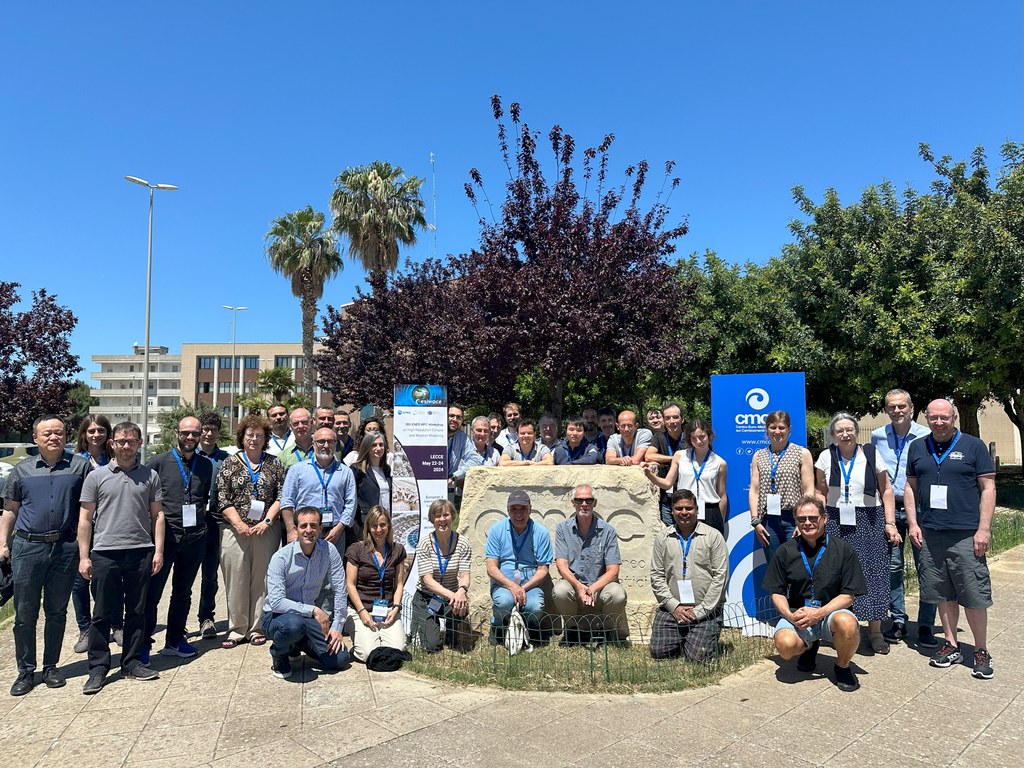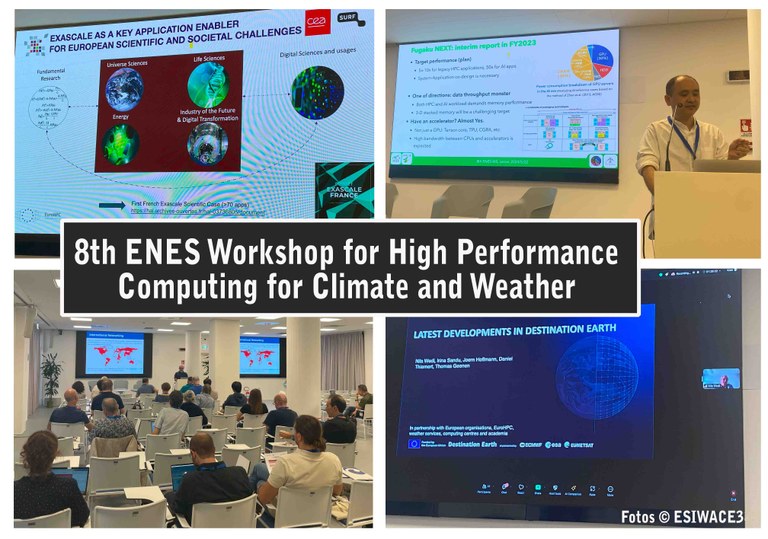30.05.2024
During these biennial workshops, members of the European Network for Earth System Modelling (ENES) exchange ideas with international experts on current topics related to high-performance computing for climate and weather simulations. The first workshop in this series, focusing on "dynamical cores," was also held at the CMCC in 2011. The DKRZ has been involved in the organization since 2011 and has hosted itself two workshops, in 2014 on the Cap San Diego in Hamburg and virtually in 2020.
The first session of this year's edition being led by Dr. Joachim Biercamp, DKRZ, co-jointly with Dr. Erwan Raffin, Bull/Eviden, provided an overview of the international status of Exascale hardware and software regarding their applications.
Dr. Hisashi Jashiro from the National Institute for Environmental Studies (NIES), Japan, reported on the plans for a successor system to the Fugaku supercomputer. So far, this is perhaps the only top-class computer in the world that still operates without accelerator hardware, such as GPUs. However, its successor system will very likely not be able to do without them. Thus, the developers of the Japanese atmospheric model NICAM face the mammoth task of porting their code to GPUs. The goal is to achieve a throughput of one simulated year per calendar day (1 SYPD) with a resolution of less than 1 km using a coupled ocean-atmosphere model by 2030. This corresponds to a 40-fold acceleration of the model compared to the current state.
Dr. Robert Jacob from Argonne National Laboratory, USA, reported on the Energy Exascale Earth System Model (E3SM) of the Department of Energy and provided a general overview of the "Exascale-readiness" of weather and climate models in the USA. There are several models in the USA being ported to GPUs. Other speakers reported on corresponding developments in China and India.
Etienne Walter from EVIDEN presented the European Processor Initiative (EPI) and the pilot project (EUPEX), where HPC hardware developed in Europe is being prototypically deployed. Dr. Corinne Béal (GENCI, France) and Dr. Lars Hoffmann (Forschungszentrum Jülich) reported on plans for the first Exascale systems in Europe (Jules Vernes in France and Jupiter in Germany), which are largely based on these European developments.

All presentations made it clear that no generally proven procedure for porting to GPUs has yet been established. Various groups continue to use the full range of programming approaches, from C++ based approaches like KOKOS and YAKL to traditional Fortran with directives like openACC, and even the use of domain-specific languages like GT4Py.
Traditionally, the workshop also includes a session on data workflows, in which Prof. Bryan Lawrence from the National Centre for Atmospheric Science (NCAS), UK, spoke about innovative approaches to handling massive datasets from ensemble simulations, and Dr. Andrea Lammert from DKRZ/WDCC advocated for the certification of archives to ensure data quality.
The event concluded with a series of talks on the possibilities opened up by machine learning (ML) methods. Data-driven weather forecasting, such as ML-supported data assimilation, was the focus here. This session was opened by Prof. Veronika Eyring, DLR, with an overview of related activities, also involving the use of the ESMvalTool.
The next event in this series in 2026 will be organised by the Swedish Meteorological and Hydrological Institute (SMHI).
Workshop program: https://www.esiwace.eu/events/8th-enes-hpc-workshop_lecce_-agenda_final.pdf
